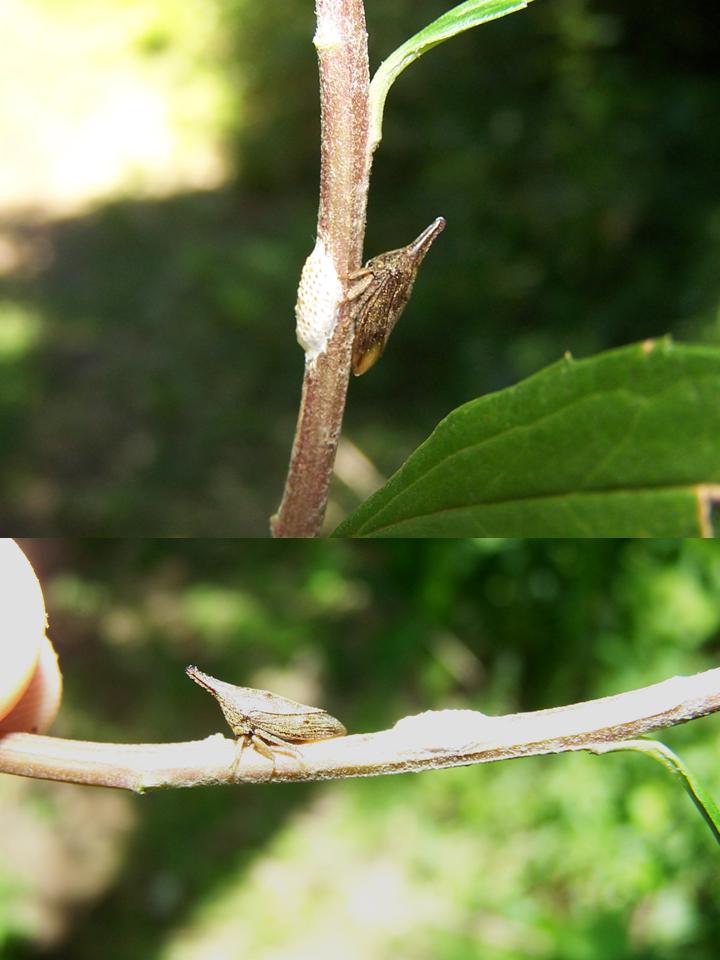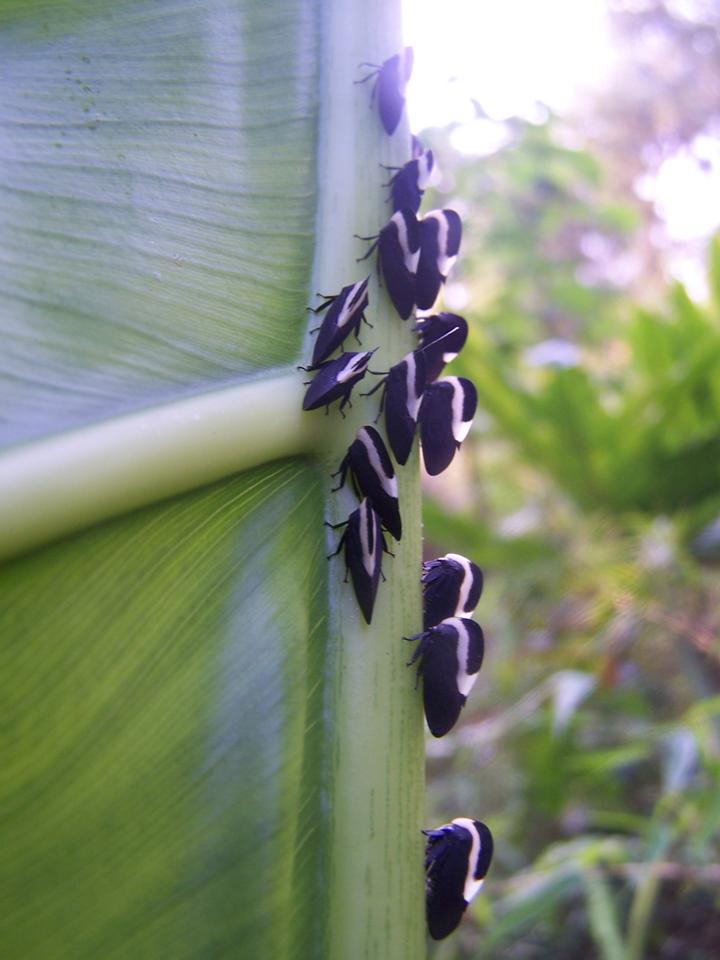

Thanks to Jason Cryan for help with the identification of Membracid images.
Designed by Paul Smith 2006. This website is copyrighted by law.
Material contained herewith may not be used without the prior written permission of FAUNA Paraguay.
Photographs on this web-site were taken by Paul Smith, Moriz Stiefel and Alex Wild and are used with their permission.
MEMBRACIDAE: TREEHOPPERS
Treehoppers are small species, many cryptically-patterned, but some with distinctive aposematic colouration. The treehoppers (or Thorn Bugs) can be recognised by their backward-pointed pronotum which may cover the membranous wings in their entireity. The degree of development of the pronotum varies greatly and in some species it has even evolved to mimic the body-shape of ants (Fig 1). All treehoppers are sap-suckers. Nymphs frequently lack the pronotal processes and are social, often developing symbiotic relationships with ants. Ants stimulate the nymphs to produce honeydew from their retractable anal tube by caressing them with their antennae. Females of some species exhibit egg-guarding behaviours. Treehoppers have short, bristle-like antennae located in front of or between the eyes and three-segmented tarsi.
Click on the images to enlarge them.
 | FIGURE 1 |
|
 | FIGURE 2 |
|
 | FIGURE 3 |
|
 Membracid guarambare, dpto central alex wild.jpg) | FIGURE 4 |
|
 membracidae san rafael 16 nov 07.jpg) | FIGURE 5 |
|
 membracidae 6 may 08 moriz stiefel.jpg) | FIGURE 6 |
|
 | FIGURE 7 |
|
 | FIGURE 8 |
|
FIGURE 1 - Bocydium sp. (probably globulare), PROCOSARA, PN San Rafael (Moriz Stiefel April 2008 - ECOSARA Biodiversity Database).
FIGURE 2 - Callocopnophora sp. (probably), PROCOSARA, PN San Rafael (Paul Smith November 2007 - ECOSARA Biodiversity Database).
FIGURE 3 - Ceresa sp., PROCOSARA, PN San Rafael (Paul Smith November 2007 - ECOSARA Biodiversity Database).
FIGURE 4 - Cyphonia sp. (probably clavata), Guarambaré, Departamento Central (Alex Wild www.myrmecos.net).
FIGURE 5 - Cyphonia sp. (probably trifida), PROCOSARA, PN San Rafael (Paul Smith November 2007 - ECOSARA Biodiversity Database).
FIGURE 6 - Cyphonia sp. (probably trifida), PROCOSARA, PN San Rafael (Moriz Stiefel May 2008 - ECOSARA Biodiversity Database).
FIGURE 7 - Membracis sp., PROCOSARA, PN San Rafael (Paul Smith August 2007 - ECOSARA Biodiversity Database).
FIGURE 8 - Umbonia sp (possibly spinosa), PROCOSARA, PN San Rafael (Moriz Stiefel April 2008 - ECOSARA Biodiversity Database).

